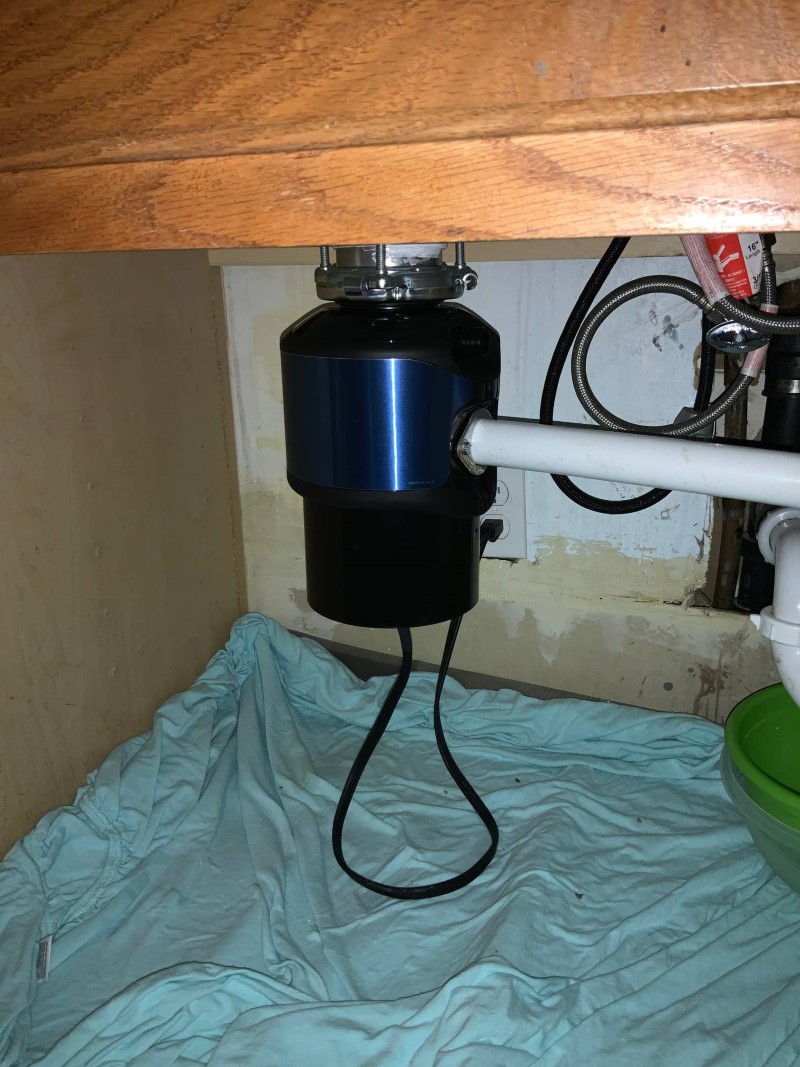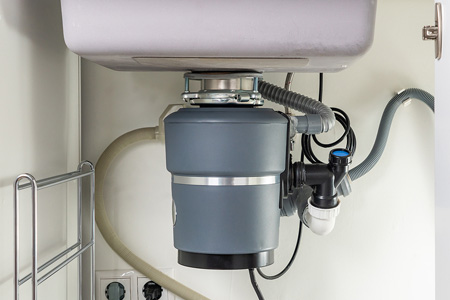Here below you can find more good quality advice on the subject of The Handy Guide To Fixing Your Garbage Disposal Leaking.

Garbage disposals are important kitchen devices that assist in taking care of food waste successfully. Nonetheless, a leaking garbage disposal can be a discouraging and unpleasant issue to handle. Luckily, several leakages can be fixed easily with a couple of basic steps. In this write-up, we will certainly discuss exactly how to take care of a leaking garbage disposal properly.
Introduction
Waste disposal unit are mounted under cooking area sinks and are made to shred food waste right into smaller sized pieces, permitting it to go through the plumbing system conveniently. While these devices are typically dependable, leakages can take place over time because of deterioration, loose links, or damage to the device.
Step-by-Step Guide to Fixing a Dripping Waste Disposal Unit
Shut off the Power
Prior to attempting any type of repair work, make certain that the power to the waste disposal unit unit is turned off to avoid the threat of electric shock.
Find the Leakage
Recognize the specific place of the leakage and establish the reason
Tighten Links
Make use of a wrench to tighten any type of loosened links in between the disposal system and the pipes system.
Change Seals or Gaskets
If the leakage is due to worn seals or gaskets, get rid of the old components and change them with brand-new ones.
Patching Splits or Holes
For cracks or openings in the disposal system, use epoxy or an ideal patching product to secure the damaged area.
Identifying the Source of the Leakage
Prior to trying to take care of a dripping waste disposal unit, it is vital to recognize the source of the leakage. This can typically be done via aesthetic assessment or by conducting straightforward examinations.
Visual Examination
Evaluate the garbage disposal system carefully for any kind of signs of water leak. Pay attention to areas around seals, gaskets, and connection points.
Checking for Leaks
One method to check for leaks is by running water via the disposal device and looking for any noticeable indications of leakage.
Usual Causes of Leakages in Waste Disposals
Worn Seals and Gaskets
Seals and gaskets play a crucial role in stopping water from dripping out of the waste disposal unit. Gradually, these parts can deteriorate, bring about leaks around the disposal device.
Loose Links
The links in between the waste disposal unit and the plumbing system can end up being loose in time, triggering water to leak out throughout procedure.
Fractures or Openings in the Disposal System
Physical damages to the waste disposal unit, such as cracks or holes in the real estate, can also result in leaks.
Devices and Materials Needed for Dealing With a Leaking Waste Disposal Unit
Prior to beginning the fixing procedure, gather the required tools and materials, including a screwdriver, adjustable wrench, plumber's putty, substitute seals or gaskets, and epoxy or patching material for repairing splits or holes.
Examining the Garbage Disposal After Fixing
Once the repair service is full, check the waste disposal unit by running water via it to make certain that the leakage has been dealt with.
Preventive Maintenance Tips to Avoid Future Leaks
To prevent future leakages, it is important to carry out normal maintenance on your garbage disposal. This includes keeping it tidy, avoiding placing non-food products or hard objects down the disposal, and occasionally checking for leakages or other issues.
Verdict
Finally, fixing a leaking garbage disposal is a relatively simple procedure that can be finished with basic devices and products. By following the steps outlined in this write-up and exercising precautionary maintenance, you can maintain your waste disposal unit in good working problem and prevent expensive repair work in the future.
What to Do About a Leaking Garbage Disposal
A leaking garbage disposal often goes unnoticed until you confront a sopping cabinet, a foul-smelling puddle, or an audible drip-drip-drip from the unit. The fix can be frustrating, too, because the leak can stem from a number of components in the system. Fortunately, with a little sleuthing, you can zero in on the leak and—depending on the exact location—stop the icky oozing and repair the component that caused it. Worst case scenario, if it turns out that the garbage disposal must be replaced, installing a new one is a reasonable do-it-yourself task for those with basic plumbing skills. Read on to keep the cash you’d otherwise hand over to a pro.
Prepare to find the leak
Prior to testing the garbage disposal for leaks, unplug it at the wall outlet and turn off the power from the breaker box to prevent electrical shock. Then insert a watertight sink stopper into your sink drain and wipe the unit dry with a clean cloth. In any handy container, mix a few drops of food coloring into a few cups of water, and pour the dyed water onto the sink stopper to help you locate the leak.
Investigate the source
the top, where the disposal meets the sink drain the side, where the dishwasher hose or main drain pipe connects to the disposal or the bottom of the unit Inspect each of these locations while gliding a light-colored rag over the unit; the dyed water will readily show on the rag and reveal the location of the leak. If a leak isn’t immediately apparent, remove the sink stopper and pour a few more cups of dyed water down the sink drain, then check for leaks again. Leaks near the top of the unit are more likely to show themselves while the sink is plugged, while side and bottom leaks are more noticeable while the sink is unplugged.
The metal sink flange that sits directly inside the sink drain is typically sealed around the top with plumber’s putty (a clay-like sealant) and then secured from under the sink with bolts. If the plumber’s putty deteriorates, or the bolts loosen, the flange can no longer form a watertight seal between the sink drain and the disposal—which could cause a leak at the top of the unit.
To reseal the leaky flange, you must first detach the garbage disposal. Start by loosening the screws securing the main drain pipe to the disposal, then loosen the screws in the metal clamp securing the dishwasher hose to the disposal and detach the drain pipe and dishwasher hose from the disposal. Loosen the screws in the mounting ring that connects the disposal to the metal mounting assembly beneath the sink, then pull down the disposal and carefully set it on a clean, dry surface. Loosen the bolts in the mounting assembly with a wrench, then pull down the mounting assembly and set it near the disposal.

Do you like more info about The Handy Guide To Fixing Your Garbage Disposal Leaking? Place a comment down the page. We'd be pleased to listen to your ideas about this write up. We are looking forward that you come back again soon. Are you aware of somebody else who is involved in Tips on Fixing a Leaking Garbage Disposal? Why not promote it. Kudos for your time. Visit again soon.
Click For More Information